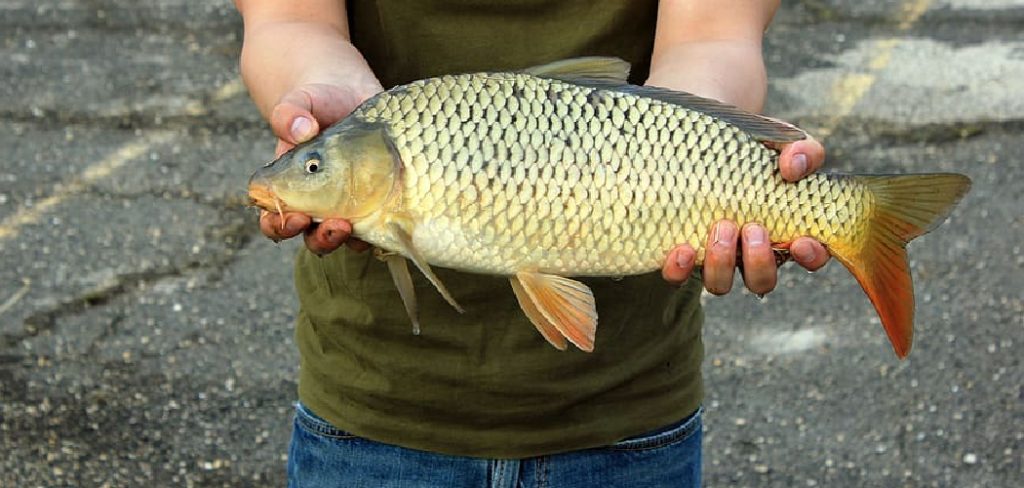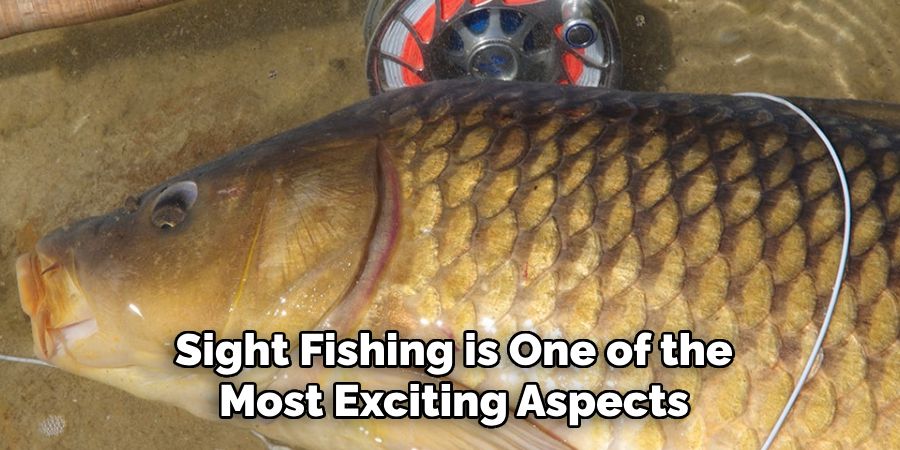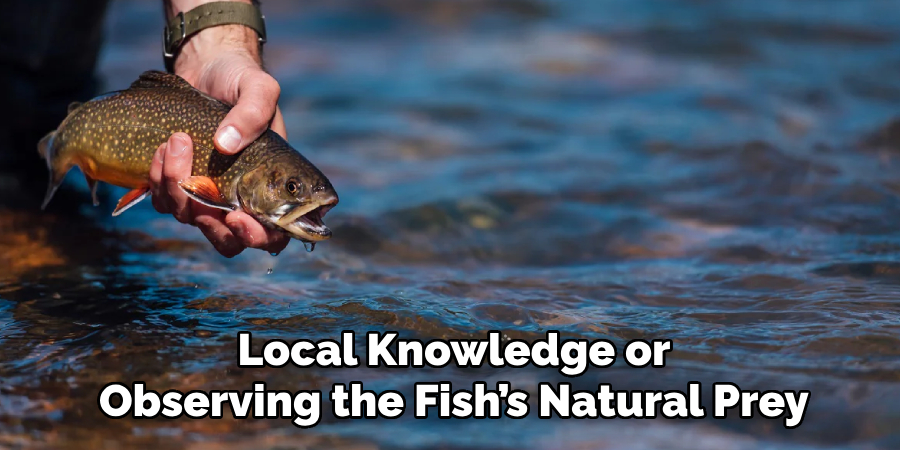Carp fishing on the fly has grown in popularity among anglers due to its challenging and rewarding nature. These powerful and intelligent fish require skill, patience, and finesse to catch, making them a thrilling target for fly fishers. Known for their wariness, carp demand careful observation, precise casting, and the right fly selection. This guide will provide you with how to catch carp on fly.

What Are Carp
Carp are a family of freshwater fish that are known for their strength, intelligence, and adaptability. Originating from Europe and Asia, these fish have since spread to various parts of the world and thrive in diverse aquatic environments, including lakes, rivers, and ponds. Carp come in several species, with the common carp being the most widely recognized.
They are often characterized by their large, torpedo-shaped bodies, barbels near the mouth, and a variety of color patterns. Carp are primarily bottom feeders, using their sensitive mouths to forage for food in the sediment. Their diet typically consists of plant matter, insects, and small aquatic organisms, which makes them a fascinating and challenging species for anglers to pursue on the fly.
Why Carp Are a Challenging and Rewarding Species
Carp present a unique challenge for fly anglers due to their keen senses and unpredictable behavior. These fish are incredibly wary, with an acute ability to detect movement, vibrations, and even minor changes in their surroundings. This heightened awareness means that anglers must approach with caution and remain stealthy in their movements.
Additionally, carp are known for their selective feeding habits, often ignoring poorly presented flies or patterns that do not closely mimic their natural food sources. However, the reward for overcoming these challenges is immense. Hooking into a carp offers an adrenaline-pumping fight, as their sheer strength and stamina test both skill and equipment.
Carp Behavior and Habitats
Understanding carp behavior and their preferred habitats is crucial for successful fly fishing. Carp are highly adaptable fish, capable of thriving in a wide range of environments, from murky ponds to clear-flowing rivers. They tend to favor warmer waters and are commonly found in shallow areas where they can forage for food. Early mornings and late afternoons are often the best times to spot them, as these are their most active feeding periods.

Carp are opportunistic feeders and can often be seen “tailing,” where their tails break the water’s surface as they rummage through the sediment for food. They also exhibit schooling behavior, particularly in pressured waters, making it important to observe their patterns and group dynamics. During hotter months, they may be found cruising the water’s surface or near vegetation for shade and cooler temperatures.
10 Methods How to Catch Carp on Fly
1. Understand Carp Behavior
Carp are highly intelligent and cautious fish that often feed in shallow waters near vegetation, mudflats, or drop-offs. They are omnivorous, consuming a diet of plant material, insects, crustaceans, and more. Observing their feeding habits and movement patterns is critical. Look for signs of activity such as tailing (when their tails stick out of the water) or mud clouds, which indicate active feeding.
2. Select the Right Fly Rod and Reel
A sturdy fly rod, typically in the 6 to 9 weight range, is essential for handling the size and power of carp. Pair it with a reel that has a reliable drag system capable of managing long runs. The rod should provide both sensitivity for accurate casting and enough backbone to fight large fish. Use a floating fly line to allow for versatile presentations.
3. Choose Effective Fly Patterns
Carp are opportunistic feeders, so selecting the right fly is critical. Patterns that mimic their natural diet, such as crayfish, leeches, nymphs, and small baitfish, are often successful. Fly patterns like Backstabbers, San Juan Worms, and Clouser Minnows are popular choices. Ensure the flies are weighted appropriately to match the depth and water conditions.
4. Refine Your Casting Accuracy
Precision is vital when fly fishing for carp. These fish are easily spooked by poor casts or excessive line movement. Practice casting to achieve delicate, accurate presentations. Aim to place the fly a few feet ahead of the carp’s path, allowing it to drift naturally into their line of sight. Windy conditions can add complexity, so developing your casting skills is crucial.
5. Master the Art of Sight Fishing
Sight fishing is one of the most exciting aspects of targeting carp on the fly. Use polarized sunglasses to reduce glare and spot fish beneath the water’s surface. Focus on areas where carp are actively feeding or cruising. Once you’ve identified a target, approach slowly and plan your cast carefully to avoid spooking the fish.

6. Employ a Stealthy Approach
Carp have excellent vision and are extremely wary of their surroundings. A stealthy approach is essential to avoid detection. Keep a low profile, minimize noise, and avoid casting shadows on the water. If you’re wading, move slowly and shuffle your feet to prevent startling the fish. Patience and careful positioning are key to a successful approach.
7. Use a Slow and Natural Presentation
Carp are more likely to take a fly that mimics the natural movement of their prey. When retrieving your fly, use slow and deliberate motions to match the behavior of insects or other food sources. Allow the fly to settle on the bottom if needed, as carp often forage there. Avoid fast or erratic movements that may deter the fish.
8. Adjust to Water Conditions
Water clarity and temperature can significantly influence carp behavior. In clear water, they are more cautious, requiring even more precise presentations and stealth. In murky water, use darker or more visible flies to attract their attention. Pay attention to water temperature, as carp are more active in warmer conditions and may feed in shallower areas during these times.
9. React Quickly to Subtle Takes
Carp often take flies with subtle movements that can be difficult to detect. Watch for slight changes in the fish’s behavior, such as a sudden stop or a gentle head movement. Keep your line taut and be ready to set the hook quickly but gently. Overreacting with a hard hookset can spook the fish or cause the fly to dislodge.
10. Practice Patience and Persistence
Catching carp on a fly rod is a test of patience and persistence. These fish are known for their selective feeding and can be challenging to entice. Be prepared to spend time observing, adjusting your approach, and experimenting with different flies and techniques. Success often comes after hours of trial and error, but the reward of landing a carp on the fly is well worth the effort.

Maintenance and Upkeep
Proper maintenance of your fly fishing gear is essential to ensure long-lasting performance and reliability, especially after targeting carp. Begin by thoroughly cleaning your fly rod and reel after each outing, particularly if you’ve been fishing in muddy or debris-filled waters.
Use fresh water to rinse off dirt, sand, and sediment, and ensure the reel is completely dry before storage to prevent corrosion. Inspect your fly line regularly for damage or wear, and clean it with a line cleaner to restore its slickness and ensure smooth casting.
Troubleshooting Common Issues
Even with proper preparation and technique, challenges can arise while fly fishing for carp. Here are some common issues anglers face and how to address them:
1. Spooking the Fish
Carp are incredibly wary and can be easily spooked by sudden movements, shadows, or noise. If you find fish scattering as you approach, take a step back and reassess your tactics. Ensure you’re using a stealthy approach by staying low, moving slowly, and avoiding splashes when wading. Pay close attention to your shadow’s position, especially when fishing in sunny conditions.
2. Missed Hooksets
Carp often take flies subtly, and detecting the take can be challenging. If you’re missing hooksets, focus on interpreting the fish’s behavior. Use a slightly tight line and watch for any unusual movements or pauses in the fish’s feeding pattern. Practice gentle hooksetting to avoid pulling the fly away too quickly. A well-timed hookset can make all the difference.
3. Line Management Issues
Tangled or slack lines can result in missed opportunities or lost fish. If you’re struggling with line management, practice keeping your line organized and minimize excess slack. Use a stripping basket when wading to prevent the line from snagging on debris or underwater obstacles. Regularly check for knots or twists, and address them promptly to maintain a smooth cast and retrieve.
4. Ineffective Fly Selection
If carp are ignoring your presentation, it could be due to an unsuitable fly pattern. Experiment with different fly types, sizes, and colors to determine what works in the specific conditions you’re facing. Local knowledge or observing the fish’s natural prey in the water can help inform better fly choices.

Conclusion
Fly fishing for carp presents a unique and rewarding challenge for anglers of all skill levels. Mastering this style of fishing requires a combination of precision, patience, and adaptability. By understanding carp behavior, employing a stealthy approach, and refining your technique, you can significantly improve your chances of success. So, there you have it – a quick and easy guide on how to catch carp on fly.
About the Author
Jennifer Branett is the author of Fishy Kayak and an expert in fish-related fields, with over 10 years of experience. Her work blends passion for fishing with a commitment to conservation.
Educational Background
Degree: Bachelor’s in Marine Biology
Institution: University of California, Santa Barbara
Specializations: Aquatic ecosystems, fish behavior, and sustainable practices
Professional Experience
Conservation Projects:
Collaborated with local organizations to restore aquatic habitats
Developed educational programs on sustainable fishing practices
Publications:
Authored articles for fishing magazines and environmental journals
Featured speaker at fishing expos and conservation conferences
Key Areas of Expertise
Fishing Techniques:
Kayak fishing strategies
Freshwater and saltwater fishing methods
Environmental Stewardship:
Advocacy for sustainable fishing
Promoting biodiversity in aquatic environments
Awards and Recognition
Recipient of the [Specific Award Name] for contributions to marine conservation
Recognized as a leading voice in the fishing community by [Organization/Publication Name]
Community Engagement
Workshops and Seminars:
Regularly hosts events to educate anglers on sustainable practices
Engages with youth programs to inspire the next generation of fishers
Online Presence:
Maintains an active blog sharing tips, stories, and conservation efforts
Engages with followers on social media to promote fishing ethics
Personal Interests
Enjoys kayaking in scenic locations
Passionate about photography, capturing the beauty of nature
Advocates for local conservation efforts in her community
